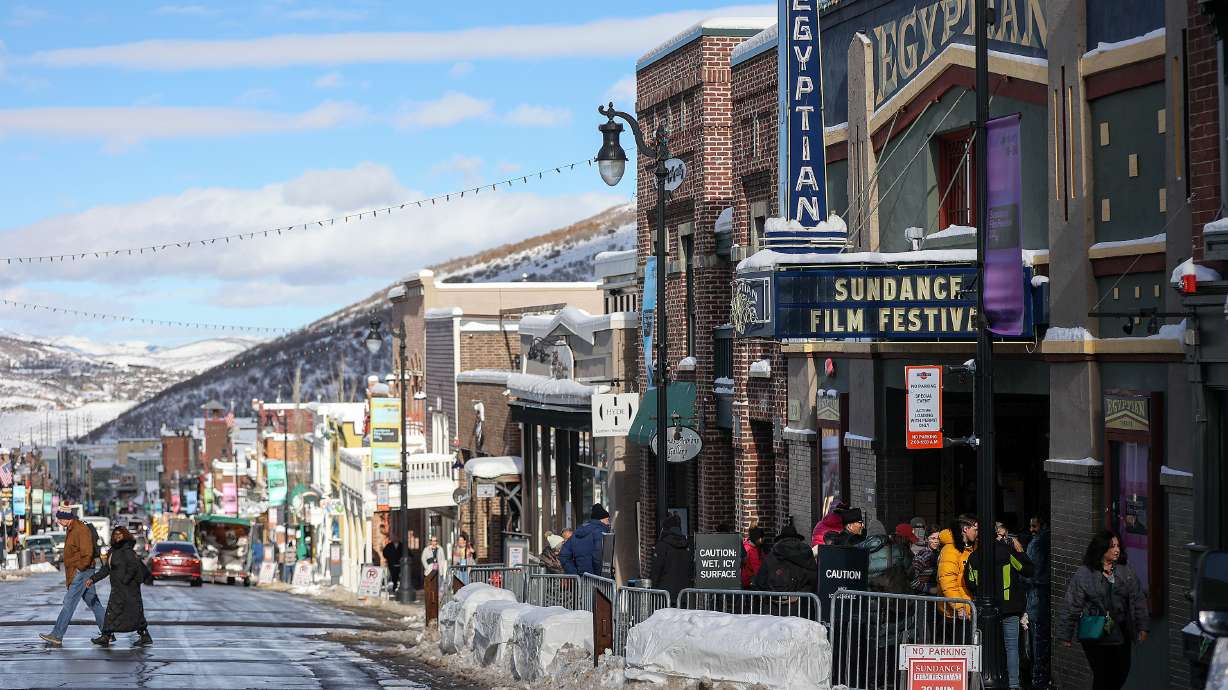Estimated read time: 4-5 minutes
This archived news story is available only for your personal, non-commercial use. Information in the story may be outdated or superseded by additional information. Reading or replaying the story in its archived form does not constitute a republication of the story.
PARK CITY — Hollywood stars have descended on Utah over the past week, continuing a tradition that's lasted for decades.
Park City officials are even holding a celebration late Thursday afternoon to celebrate the Sundance Film Festival's 40th season before it wraps on Sunday.
All of the festivities are more of a celebration of Sundance as it's known today because the festival wasn't always a 10-day extravaganza and it wasn't always in Park City. Here's a look at how Sundance became as big as it is today.
The pre-Sundance days
Utah's premier film festival originated as the Utah/United States Film Festival in 1978, a brainchild of the Utah Film Commission. It was, as noted by Britannica, created to "promote independent film and to bring the state of Utah to the attention of filmmakers." Legendary actor Robert Redford, who had moved to Utah by this time, served as its first board chairman.
The Utah Enterprise Review in January of that year wrote Utah's pitch was to create a first-of-its-kind film festival for exclusively American films and "focus on how they influence lifestyles and issues." While Sundance is famously a winter event today, this event would take place in the summer.
The project also aimed to further promote Utah to Hollywood, decades after studios began filming movies in the Beehive State.
"We've got industry support and it's a good way to introduce film people to Utah," John Earl, who worked in the state's industrial development division at the time, told the outlet. "No other areas are doing festivals at this time of year, and the way we envision this it will help expose Utah's film resources that the industry may not be aware of."
Organizers settled on holding it at Trolley Square after initially setting their sights on the Capitol Theatre, Utah Enterprise Review reported in May of that year. The festival launched over six days in September, featuring a mix of old and new movies. Claudia Weill's "Girlfriends" was named the winner of a regional cinema award at the end of it, the Salt Lake Tribune reported at the time.
The problem was the festival wasn't very successful — at least compared to Sundance's successes today. Per Britannica, attendees loved the concept but it struggled to stay afloat financially, so organizers moved it up into the wintertime and to Park City, pushing it closer to the resorts. The first Park City festival took place in 1981.
The growth of Sundance
It went through a few other changes before its modern format was created. The biggest change, however, came when the Sundance Institute — founded by Redford in 1981 — took over the event.
Once Sundance Institute took control of the festival, the organization expanded it to 10 days beginning in 1985. Some local news outlets reported on the anticipation.
"It's probably the biggest selection since the festival's first year and no doubt the biggest since it came to Park City." the Park Record reported on Jan. 17, 1985, noting that there were many other award changes for the first year of the modern format.
In all, 86 films were screened in two theaters, including "Blood Simple," the first movie that Joel and Ethan Coen put together, as well as Jim Jarmusch's "Stranger Than Paradise," Greta Schiller's "Before Stonewall," John Schlesinger's "The Falcon and the Snowman" and Roland Joffe's "The Killing Fields," according to the institute.

The festival slowly expanded from there, reaching more than 100 films screened for the first time in 1990. New events, including the Midnight section and shorts program, were introduced a year later as it grew.
By 1994, as the institute celebrated its 10th season in the modern format, it had received 325 film submissions, 169 of which were screened. It had 5,874 submissions a decade later and 12,218 submissions a decade after that — even though the number of films screened has dipped after reaching 271 in 2007.

That's made it harder for filmmakers to get into the prestigious event. A record-setting 17,000 submissions were sent to the institute in hopes of landing in this year's event, but only 91 projects were announced for this year. Recent festivals have even brought back some of Sundance's origin, bringing more screenings to downtown Salt Lake City.
It just goes to show how Sundance's influence continues to grow after 40 seasons. Its place in pop culture today also proves Utah reached one of its initial goals outlined in 1978 — Hollywood is very much aware of Utah.










